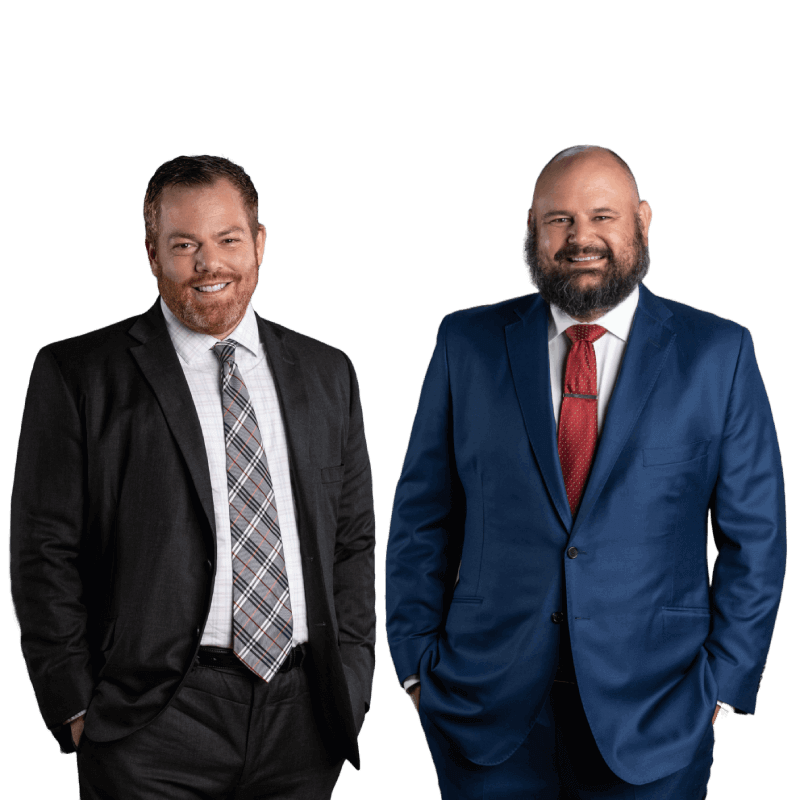You may have used an Uber to visit a restaurant, get a ride home, or travel to and from the airport. Since Uber’s establishment in 2009, the company has grown tremendously due to the demand for quick and convenient transportation. Like any drivers, Uber drivers can also be involved in car accidents.
Who May You Hold Liable in an Uber Accident?
Arizona is an at-fault state, which means that in a motor vehicle accident, the driver who was responsible owes compensation to anyone who sustained injuries or property damage. Identifying the responsible party is difficult in any car crash case. Just as there may be multiple causes of an accident, multiple people or entities may be liable.
An injured person may seek damages against anyone whose negligence might have contributed to the accident, such as:
- The rideshare driver
- Other motorists
- The rideshare company
- The vehicle or parts manufacturer
- A local government agency might be liable if improper signage or road maintenance or signage was an issue
- Cyclists or pedestrians
- Vehicle passengers
Responsibility for damages differs based on the circumstances of the accident.
If the rideshare app is off, then the driver’s personal auto insurance will be responsible for covering the damages.
If the rideshare app is on, then the driver’s personal auto insurance and the company’s liability coverage will cover the damages.
If a passenger is in the car, the company’s commercial insurance will cover the damages.
Can you sue Uber after an accident
In Arizona, Uber drivers are independent contractors, not employees. Therefore although you cannot sue Uber directly for its drivers’ actions, you can hold the company responsible for its own negligent actions.
For example, if Uber hired a driver who did not pass the screening process for Uber drivers, the rideshare company might be negligent for facilitating an unsafe driver transporting passengers. Uber requires that all drivers have a valid driver’s license and maintain proper insurance coverage and legal documents that permit them to work in the United States. Uber also carries insurance policies that cover bodily injury and property damage.
Common causes of Uber accidents
According to widespread research, human error causes at least 94 percent of motor vehicle accidents. Unfortunately, this is also true of Uber’s drivers.
Common factors that contribute to accidents include:
- Distracted driving is one of the leading causes of Uber accidents because Uber drivers tend to have more distractions than other drivers. While behind the wheel on busy streets, drivers frequently check their Uber app for the passenger’s location and scan the street to locate a passenger waiting for pickup.
- Driving under the influence of drugs or alcohol. Uber has a zero-tolerance policy for driving under the influence. That includes having open containers of alcohol or drugs in a vehicle while using the Uber app. If your driver is under the influence, Uber urges you to ask the driver to end the trip immediately, get out of the car, call 911 and report the incident to Uber.
- Drowsy driving. Driving while fatigued is just as dangerous as driving under the influence. Drivers must always assess their level of fatigue before logging on and while driving. Unfortunately, drivers usually try to make as much money as possible, so they may drive too long without a break. Therefore, Uber requires drivers to go offline for six consecutive hours after driving for 12 hours.
- Sudden or illegal U-turns. These are especially common for rideshare drivers because they frequently look for a destination or see their passengers waiting on the opposite side of the street.
- Tailgating or driving recklessly.
- Failing to obey all traffic regulations, signs, and signals.
- Speeding or driving too fast for weather or road conditions.
- Failing to check blind spots.
- Crossing the center line.
- Failing to make necessary repairs and maintain the vehicle.
Arizona Ridesharing Laws: Understanding Uber’s Regulations
As noted, Arizona law considers rideshare services transportation network companies.
When a transportation network company driver is logged on but has not yet accepted a customer’s request for a ride, they must have motor vehicle coverage of $25,000 per person, $50,000 per accident for bodily injury, and $20,000 per accident for property damage.
After the driver confirms a ride request, they must have primary commercial motor vehicle insurance coverage of $250,000 per incident and commercial uninsured motorist coverage of at least $250,000 per incident.
Once the driver logs on and begins working, Uber offers additional coverage. When a driver is logged into the app but has not accepted a ride, Uber’s coverage offers $50,000 for bodily injury of one person, $100,000 aggregate for bodily injury of more than one person, and $25,000 for property damage if the driver’s insurance cannot cover an injured person’s damages.
Once the driver accepts a ride, Uber’s full coverage of $1 million in third-party liability and uninsured motorist coverage goes into effect and continues until the ride ends.
What to Expect When Suing Uber
Given the unique aspects of rideshare services and the status of drivers as independent contractors, suing Uber can be a complex legal process. Here’s an overview on what to expect:
Consultation with an Attorney:
It starts with discussing your case with an attorney experienced in rideshare accidents. They will evaluate the merits of your claim and advise on the best legal strategy.
Investigation:
Gather all necessary evidence, including the accident report, witness statements, your medical records, and possibly expert testimony about the accident’s impact and the liability of the involved parties.
Filing the Lawsuit:
Filing a complaint against Uber, the driver, or both, depending on the case specifics.
Discovery Process:
Both sides exchange information and evidence. This stage includes depositions, requests for documents, and interrogatories.
Negotiation and Mediation:
Before going to trial, there’s often an attempt to settle the case out of court. Your attorney will negotiate with Uber’s legal team to reach a settlement that covers your damages.
Trial:
If a settlement isn’t reached, the case will go to trial. Here, both sides present their evidence, and a judge or jury makes a decision.
Verdict and Settlement:
If the verdict is in your favor, the court will award damages. Uber may choose to settle at any point during the trial if it becomes evident that the verdict may not be favorable.
Appeals:
Either party can appeal the court’s decision if they believe a legal error has occurred.
What Damages You Can Recover Compensation For
As with any other personal injury case, the damages you could receive after an Uber accident depend on:
- The nature and extent of your injuries
- Current and future lost wages and income
- Pain and suffering resulting from the accident
- How you have suffered a diminished quality of life
Is There a Deadline to Sue Uber After an Accident?
The deadline for filing most car accident lawsuits in Arizona’s civil court system is two years. If you fail to file a claim within those two years, the court will likely bar your ability to use the court system to seek compensation.
Therefore, if you or a loved one has been injured in an Uber accident, contact an experienced, dedicated personal injury attorney as soon as possible. Schedule a free consultation and learn how a legal professional can help you recover the compensation you deserve.


